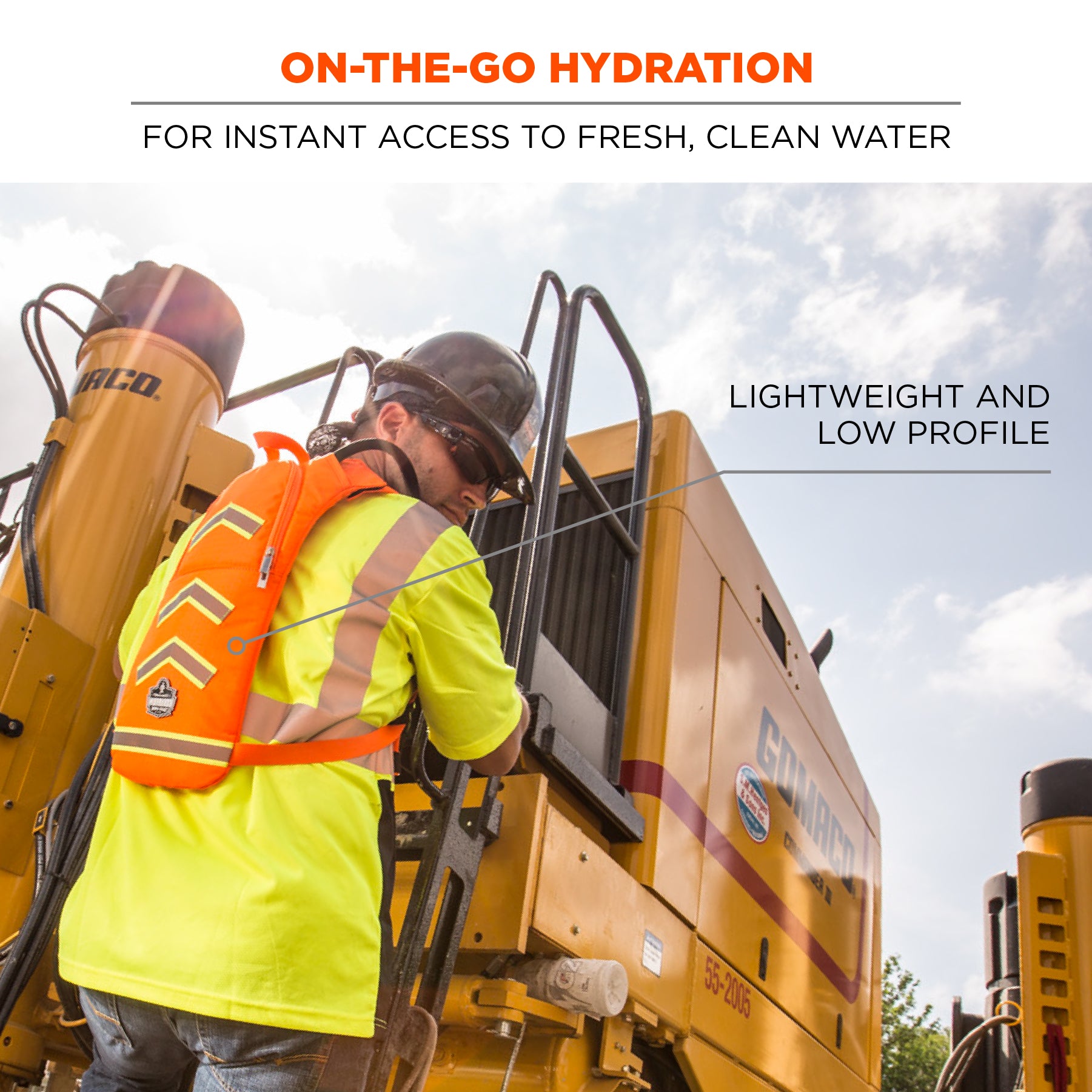In the realm of outdoor activities, staying hydrated is paramount, especially during high-intensity endeavors like hiking, cycling, or running. Enter the hydration pack backpack, a convenient and efficient solution for carrying water and staying hydrated on the go. In this guide, we'll explore what hydration pack backpacks are, how they work, and when to use them properly to optimize hydration during various outdoor pursuits.
What is a Hydration Pack Backpack?
A hydration pack backpack is a specialized backpack equipped with a built-in hydration reservoir, also known as a bladder, that allows users to carry and access water hands-free during outdoor activities. The bladder is typically made of flexible, BPA-free material and features a hose with a bite valve for convenient drinking without stopping or slowing down.
How Does a Hydration Pack Backpack Work?
The hydration pack backpack works on a simple yet ingenious principle. The bladder, filled with water or a sports drink, is inserted into a dedicated compartment within the backpack. The hose connected to the bladder is then routed through a designated opening or sleeve on the backpack, allowing easy access to the bite valve at the end of the hose.
To drink from the hydration pack, the user simply bites down on the valve to open it, allowing water to flow through the hose and into their mouth. When not in use, the bite valve remains sealed to prevent leaks and spills, ensuring that water is always readily available without the need to stop or remove the backpack.
When to Use a Hydration Pack Backpack Properly?
1. Outdoor Activities
- Hiking: Hydration pack backpacks are ideal for hiking, providing a convenient way to carry water without having to stop and dig through a traditional water bottle.
- Cycling: Cyclists can benefit from hydration pack backpacks during long rides, allowing them to stay hydrated without needing to reach for a water bottle while on the move.
- Running: Runners can stay hydrated during races or training sessions by using hydration pack backpacks, minimizing the need to carry bulky water bottles or rely on water stations.
2. High-Intensity Workouts
- Cross-country Running: Hydration pack backpacks are popular among cross-country runners for their lightweight design and hands-free hydration capabilities, allowing runners to focus on their performance without distractions.
- Trail Running: Trail runners can stay hydrated on remote trails or rugged terrain by using hydration pack backpacks, ensuring they have access to water whenever they need it, even in challenging conditions.
3. Outdoor Events and Festivals
- Music Festivals: Attendees of outdoor music festivals can benefit from hydration pack backpacks, allowing them to stay hydrated and avoid long lines at water refill stations.
- Sporting Events: Spectators at outdoor sporting events can use hydration pack backpacks to stay hydrated while cheering on their favorite teams, providing a convenient alternative to carrying water bottles or cups.
4. Travel and Commuting
- Traveling: Travelers can use hydration pack backpacks to stay hydrated while exploring new destinations or engaging in outdoor activities, ensuring they have access to water wherever their adventures take them.
- Commuting: Commuters can use hydration pack backpacks for cycling or walking to work, providing a convenient way to stay hydrated during their daily travels without needing to carry a separate water bottle.
Tips for Using a Hydration Pack Backpack Properly
- Proper Hygiene: Regularly clean and maintain your hydration pack backpack to prevent mold and bacteria buildup in the bladder and hose.
- Monitor Fluid Intake: Drink water regularly from your hydration pack backpack to maintain hydration levels, especially during hot weather or intense physical activity.
- Adjust Fit: Ensure your hydration pack backpack fits comfortably and securely, with the weight distributed evenly to prevent discomfort or chafing.
- Protect Against Freezing: In cold weather, insulate the hose of your hydration pack backpack to prevent water from freezing and impairing flow.
- Stay Aware of Water Levels: Monitor the water level in your hydration pack bladder to avoid running out of water during outdoor activities, especially in remote or challenging terrain.
Conclusion
In conclusion, hydration pack backpacks are versatile and practical tools for staying hydrated during a wide range of outdoor activities and adventures. By providing convenient access to water without the need to stop or slow down, these backpacks enable users to maintain optimal hydration levels and enhance performance, comfort, and safety in various environments. By understanding how hydration pack backpacks work and when to use them properly, outdoor enthusiasts can make the most of these innovative hydration solutions and enjoy their outdoor pursuits to the fullest.

